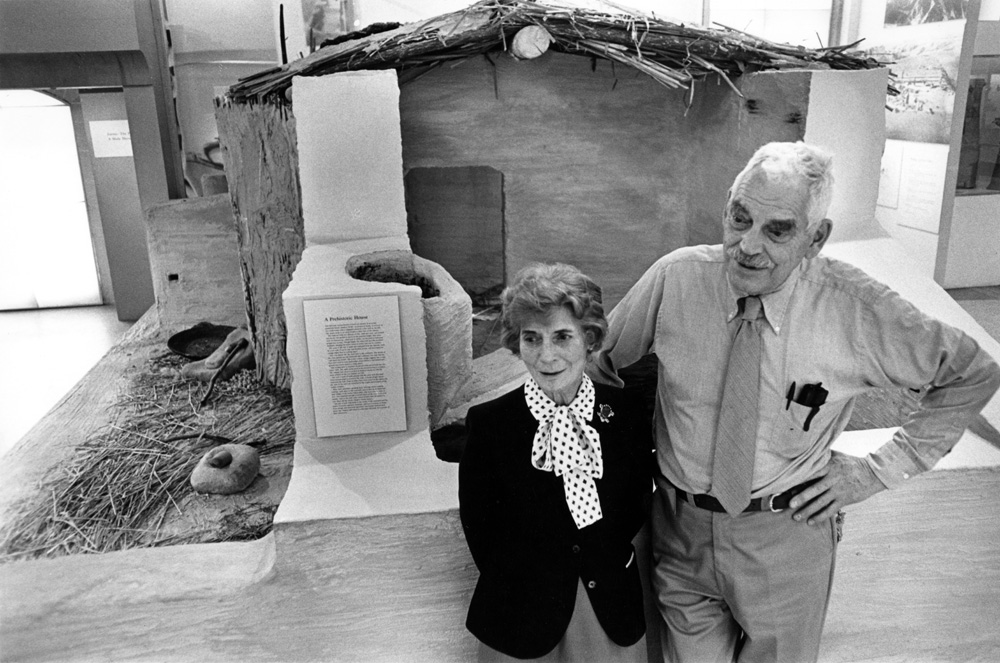We got to know the prehistoric settlements thanks to him: Who is Robert John Braidwood?
Until the 1930s, excavations, and research were carried out to reveal the cities mentioned in the ancient sources, not the prehistoric settlements. Braidwood changed that.

US archaeologist. He is a specialist in the prehistoric cultures of the Near East. He was born in Detroit, USA. He began studying architecture at the University of Michigan, then moved on to the Department of Ancient History and Anthropology. He graduated in 1933. While still a student in 1930, he worked in the excavation of the city of Selcucia on the Tigris in Anatolia, and in 1933, in the excavation of a local settlement in Illinois. In the same year, he participated in the Antakya Amik Plain research of the University of Chicago Oriental Sciences and served until the excavations at Çatal Höyük, Teli es-Judcide, and other settlements ended in 1938. In 1935 he met Gordon Childe, whose views he was very impressed with. He married his colleague Linda Braidwood in 1937 and continued his work with her.
Robert John Braidwood (29 July 1907 – 15 January 2003) was an American archaeologist and anthropologist, one of the founders of scientific archaeology, and a leader in the field of Near Eastern Prehistory.
He did his doctorate at the University of Chicago. He became an associate professor in 1943 and began teaching in the Department of Anthropology on prehistoric old-world cultures. In 1945 he organized a seminar on the origins of man. He was elected an honorary member of the Society of Antiquaries of London in 1973.
Until the 1930s, excavations, and research were carried out to reveal the cities mentioned in the ancient sources, not the prehistoric settlements. Braidwood tended to find the settlements in which humans passed from the hunter-gatherer order to the earliest village life and led the investigation of the origins of the transition to agriculture and the results of the agricultural life.
For this purpose, he excavated in a settlement called Jarmo in the Zagros Mountains to the east of Kirkuk in Iraq in 1950. By examining and evaluating both natural and man-made remains, he provided an understanding of the ancient natural environment here. He suggested that there was only one settlement phase in Jarmo and that it lasted for 500 years at most, and he dated this settlement to 6750 BC, that is, to the Neolithic Age, using the radiocarbon method. However, other researchers, such as Seton Lloyd, were wrong in their previous dating for the same place and thought that it belonged to the Mesolithic Age, older than the Neolithic Age.
Braidwood conducted research and excavations in Sarab, near Kermanshah, in the Iranian part of the Zagros Mountains in 1959-1960. He found that this place was generally similar to Jarmo, but was a later and somewhat more developed early village settlement.
In 1963, Braidwood, together with Halet Çambel, conducted field research around Siirt, Diyarbakir, and Urfa within the scope of the Southeastern Anatolian Prehistory Research Project carried out by the Department of Prehistory of Istanbul University and the University of Chicago. Various finds have revealed that the people of Çayönü attach great importance to architecture. It is understood that, apart from the residence, a type of building that approaches monumentality in terms of both its plan and construction details and that has a special function has been used for a long time. The Çayönü finds have an important quality that illuminates the prehistoric period of Anatolia.
In the Braidwood excavations, he carries out teamwork with the participation of experts from various branches of natural sciences as well as archaeologists, thus carrying out the analysis and definition of the area he is investigating as a whole.
